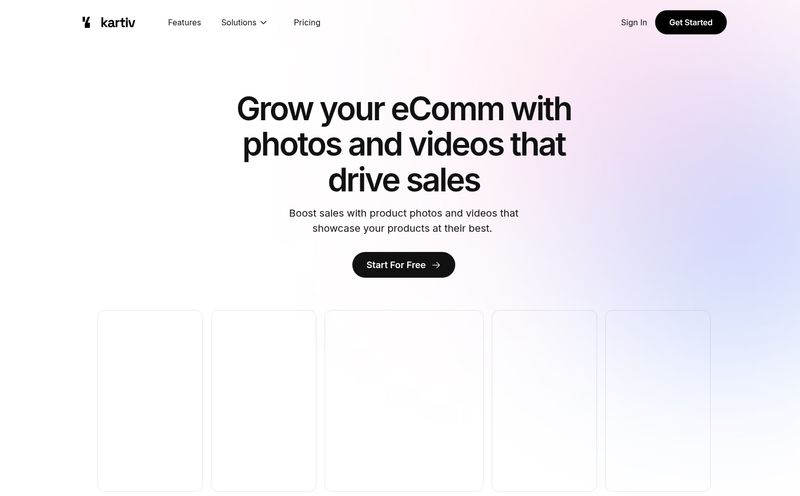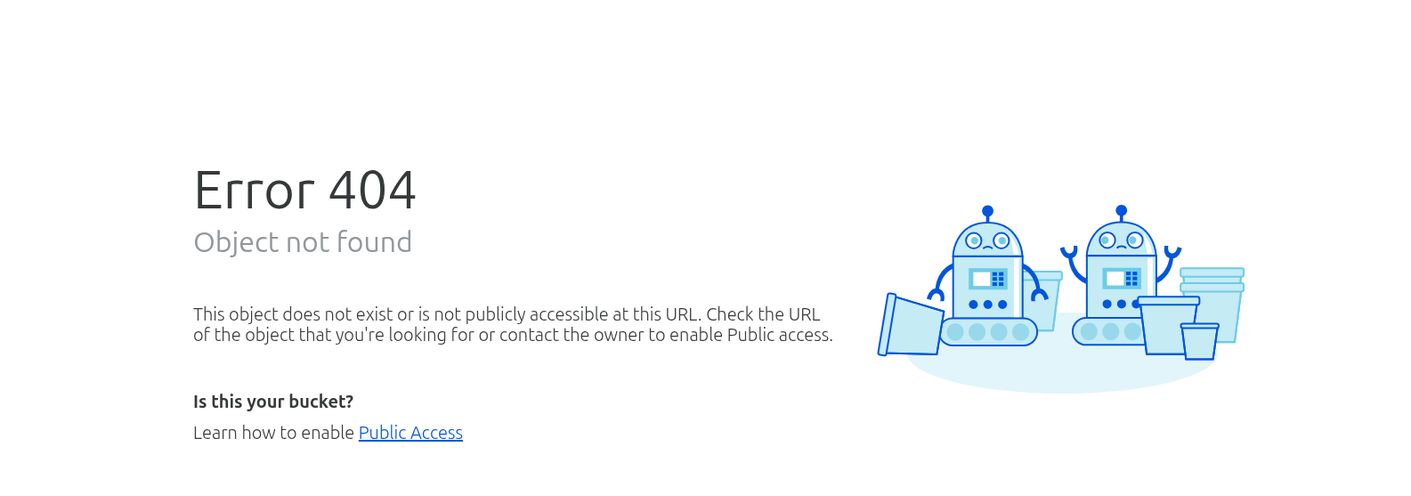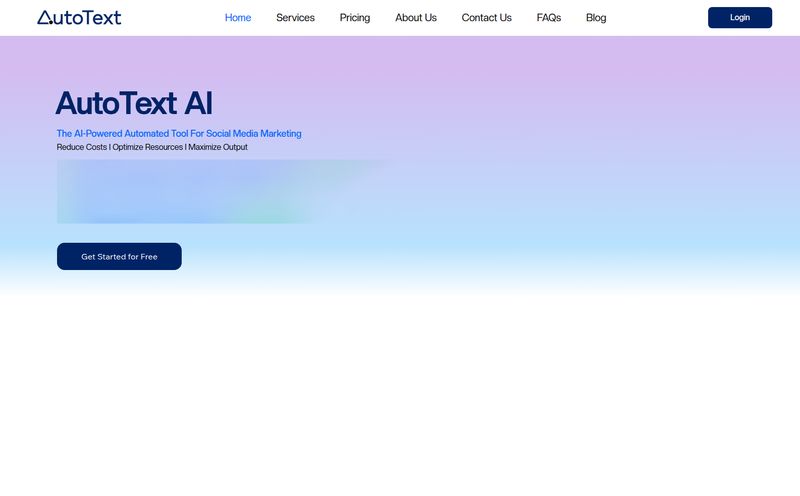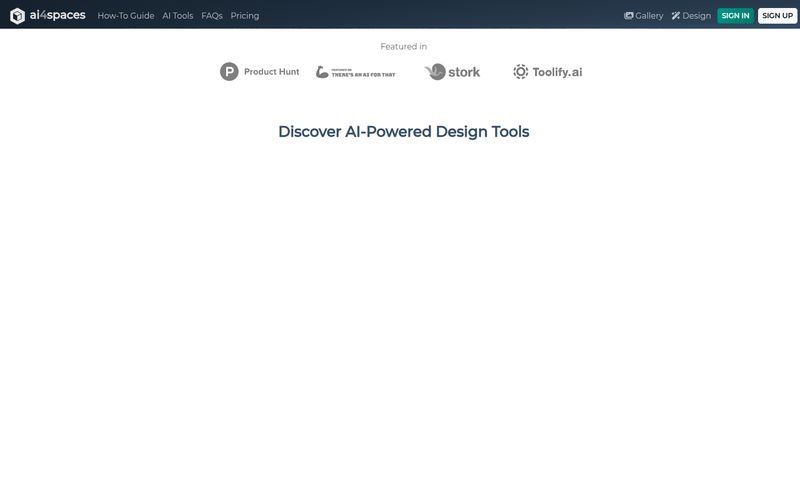I remember the first time I saw one of those early AI-generated images. It was probably back in 2021, and it was this bizarre, dream-like landscape that was both beautiful and slightly… off. It felt like looking at a memory of a place I'd never been. Since then, the AI art world has absolutely exploded. We've got the big names like Midjourney and DALL-E that can create photorealistic wonders, but let's be real, they can also come with a steep learning curve and a whole new language of prompt engineering. Sometimes you just want to type an idea and see what happens, you know?
That's the exact itch that tools like NeuralBlender.com seem to be scratching. I stumbled upon it recently, and its whole vibe is different. It’s less like a complex piece of professional software and more like an open invitation to just… play. So, as someone who's always looking for new ways to generate traffic and create unique visuals for content, I had to give it a spin.
So, What Exactly is NeuralBlender?
At its heart, NeuralBlender is a text-to-image AI generator. You give it a string of words—a prompt—and its artificial intelligence models get to work, creating a completely original piece of art based on your description. The homepage itself says it best: "NeuralBlender uses state-of-the-art AI technology to generate images from text input." No frills, no jargon, just a straight-up promise. It's built on a foundation of some pretty cool tech, including things like VQGAN and CLIP, which were the darlings of the AI art scene before the diffusion models completely took over.
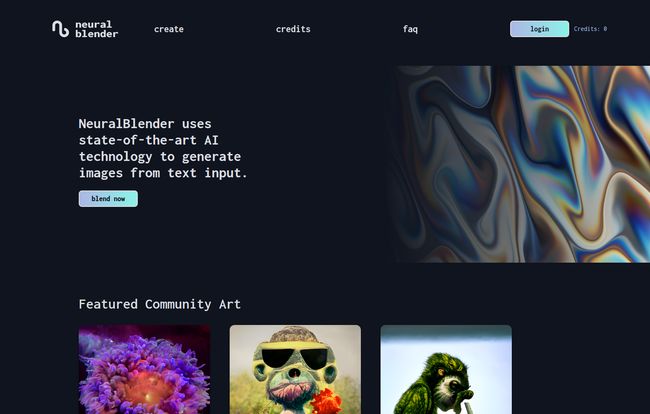
Visit NeuralBlender.com
First Impressions: Clean, Simple, and to the Point
Landing on the website, the first thing I noticed was the interface. It’s clean. It’s dark mode by default (a big plus in my book), and it doesn’t bombard you with a million options. There's a big, friendly "blend now" button that practically begs you to click it. It feels accessible, which is a refreshing change of pace. I've spent hours wrestling with Discord bots and complex parameters on other platforms; this felt like a breath of fresh air.
The featured community art gives you a quick taste of what’s possible. You see everything from surreal, glowing floral creations to stylized monkeys with sunglasses. It immediately tells you that the output can range from the beautiful to the bizarre, which is half the fun of these tools.
The Tech That Makes the Magic Happen
For those of you who like to know what's going on under the hood, NeuralBlender mentions using models like VQGAN, CLIP, and BigGAN. This is a bit of a throwback in the fast-moving AI world, but that’s not a bad thing!
A Quick Word on VQGAN+CLIP
Think of the VQGAN+CLIP combo like a game of Pictionary between two AIs. VQGAN is the artist. It knows how to draw all sorts of things, but it has no idea what to draw. CLIP is the judge. It has a deep understanding of language and can look at an image and say, "Yep, that looks like a 'cyberpunk fox walking through a neon-lit Tokyo rain'" or "Nope, that's just a blurry cat." So, VQGAN starts painting something random, CLIP looks at it, gives feedback, and VQGAN adjusts. They go back and forth thousands of times until CLIP is satisfied that the image matches the prompt. This process is what often gives the art that distinct, painterly, and sometimes wonderfully weird aesthetic. It's less about photorealism and more about capturing a vibe.
The Good, The Bad, and The Artsy
Every tool has its strengths and weaknesses, right? After playing around for a bit, here’s my breakdown of NeuralBlender.
| What I Liked 👍 | What I Didn't 👎 |
|---|---|
| Incredibly easy-to-use interface. | Requires JavaScript (not a big deal for most). |
| Great for beginners dipping their toes in AI art. | Lack of clear information on advanced features. |
| Produces unique, often artistic and abstract results. | Not ideal for photorealistic or highly-specific outputs. |
The Simplicity is a Superpower
I can't stress this enough: the main advantage here is how easy it is to get started. You don’t need to join a Discord server or learn a bunch of commands with double dashes and arcane parameters. You type your idea, you hit blend, and you see what the machine dreams up. For a blogger who needs a quick, unique featured image, or a small business owner wanting a cool graphic for an Instagram post, this low barrier to entry is fantastic.
Where It Could Improve
My main gripe, if I have one, is the lack of information on customization. As an experienced user, I immediately start looking for the knobs and dials. Can I change the aspect ratio? Can I upload a starting image? Can I tweak the 'weirdness' level? The site doesn't make these options obvious, if they exist at all. This might frustrate power users who are used to the granular control offered by platforms like Stable Diffusion. It seems built for a different audience, and that's okay, but a little more clarity would be welcome.
What About the Cost? The Mystery of the Credits
Here's where things get a bit murky. The interface shows a "Credits: 0" counter and the footer has a Stripe logo, which strongly suggests a pay-to-play model. This is pretty standard for AI generators—those GPUs aren't free to run! However, I couldn't find a clear pricing page. My guess is that it operates on a credit pack system, where you buy a bundle of credits to use for generating images. I personally prefer this over a monthly subscription if my usage is sporadic. But the lack of transparency is a small hurdle; I'd love to see a dedicated pricing page to know what I'm getting into before I get too invested.
Who Is This Tool Really For?
After my testing, I've got a pretty good idea of the ideal NeuralBlender user. I think this tool is perfect for:
- Content Creators and Bloggers: Need a unique, royalty-free image for your next article that isn’t from the same old stock photo site? This is a great solution.
- AI Art Newcomers: If you're curious about text-to-image generation but feel intimidated by other platforms, this is your gateway. It's fun, simple, and the results are instanty gratifying.
- Social Media Managers: Churning out eye-catching visuals for social feeds is a grind. NeuralBlender can be a great brainstorming partner for creating abstract or quirky posts that stop the scroll.
It's probably not for the professional digital artist who needs pixel-perfect control or someone trying to generate photorealistic headshots. It's a different beast, and it leans into its artistic, slightly unpredictable nature.
My Final Take: A Fun and Worthy Tool
So, is NeuralBlender worth your time? Absolutely. It’s a fantastic entry point into the wild world of AI art. It successfully lowers the barrier to entry, allowing anyone with an idea to become a digital artist in seconds. It may not have the raw power or the complex feature set of its bigger, more famous cousins, but it’s not trying to. It’s the fun, approachable tool you show your friend to get them hooked on AI art. It’s a digital canvas that’s less about perfection and more about surprising, delightful creation. And in a world obsessed with hyper-realism, that's a pretty wonderful niche to fill.
Frequently Asked Questions
- What is NeuralBlender?
- NeuralBlender is a website that lets you create original images from text descriptions using AI. You type what you want to see, and the AI generates a unique piece of art for you.
- How does NeuralBlender create images?
- It uses a combination of AI models, primarily VQGAN (the artist) and CLIP (the guide), to translate text prompts into visual art. This process generates unique, often painterly and abstract images.
- Is NeuralBlender free to use?
- It appears to use a credit-based system. While there might be a free trial or some initial free credits, generating images consistently will likely require purchasing credit packs. The site uses Stripe for payments but lacks a clear, public pricing page.
- What kind of art can I make with it?
- The style leans towards the artistic, abstract, and surreal. It's great for creating dream-like landscapes, bizarre creatures, and unique patterns. It's less suited for generating realistic photos of people or objects.
- Do I need any special skills to use NeuralBlender?
- Not at all! That's its biggest strength. If you can type a sentence, you can create art with NeuralBlender. It’s one of the most beginner-friendly AI art tools available.
- How does it compare to Midjourney?
- Think of NeuralBlender as the simple, fun-to-drive go-kart and Midjourney as the high-performance F1 car. NeuralBlender is much easier to start with and gives you cool, artistic results quickly. Midjourney is more powerful and capable of stunning realism, but requires more skill and learning to master its complex prompting system.
Reference and Sources
- NeuralBlender.com Official Website
- AssemblyAI: How VQGAN+CLIP Works - A great technical (but readable) explanation of the underlying tech.
